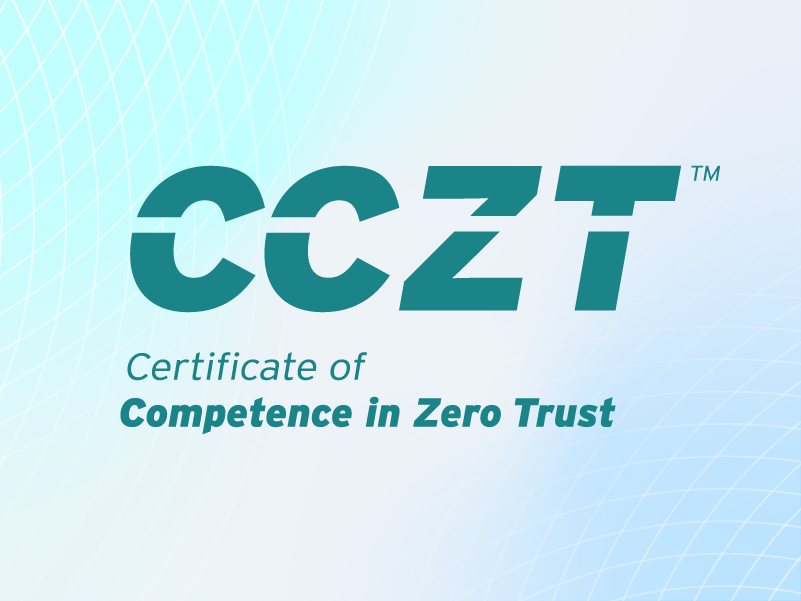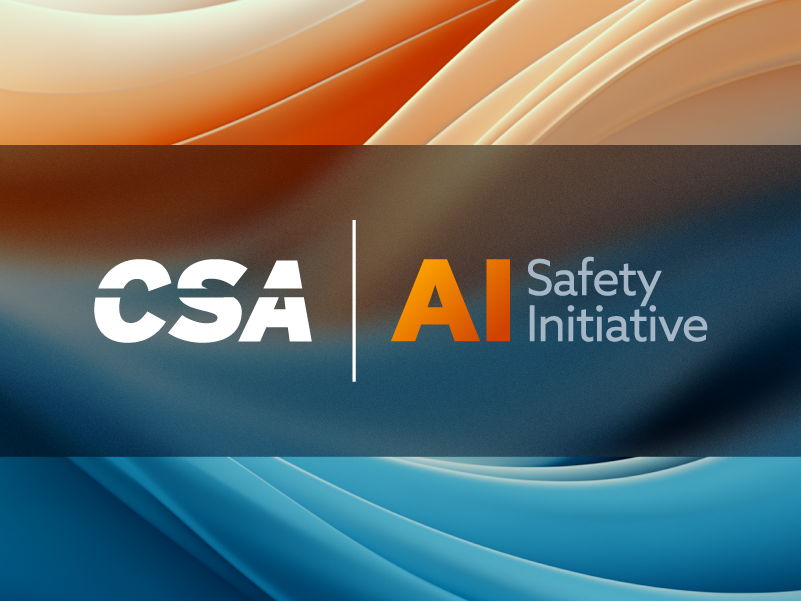AI Log Analysis for Event Correlation in Zero Trust
Published 09/26/2025
 Modern enterprises generate oceans of logs that span on-prem, cloud, IoT, and OT. Think identity, device, data, network, and application events. Logs are the backbone of visibility, but logs alone do not provide actionable insights. They become powerful when analyzed and correlated for threats, vulnerabilities, and anomalous behavior.
Modern enterprises generate oceans of logs that span on-prem, cloud, IoT, and OT. Think identity, device, data, network, and application events. Logs are the backbone of visibility, but logs alone do not provide actionable insights. They become powerful when analyzed and correlated for threats, vulnerabilities, and anomalous behavior.
In a new publication, CSA argues for pairing AI log analysis with sound event engineering to:
- Reduce SOC cognitive load
- Minimize false positives
- Accelerate event correlation across complex estates
You should not have to depend solely on rules in a monolithic SIEM. Instead, implement a customizable approach where SOC teams can tailor, train, and adapt models to their environments.
This is all in an effort to better align with Zero Trust security principles. Recall that Zero Trust says no part of a computer and networking system can be implicitly trusted, including the humans operating it. Therefore, we must put measures in place to provide assurance that the systems and their components are operating appropriately under a least privilege model and continuously verified.
Below, learn more about how AI-driven anomaly detection and event correlation help strengthen Zero Trust security.
Why Logs Matter So Much in Zero Trust (and Why AI Helps)
Zero Trust rejects implicit trust by maintaining that you must continually verify each user, device, application, and transaction. That level of verification requires visibility, which is a cornerstone of the Zero Trust approach. Visibility enables continuous monitoring, contextual awareness, granular control, and effective incident response.
CSA recommends logging everything across all five Zero Trust pillars (Identity, Device, Data, Network, Application). Each pillar generates events from its perspective. During a single business transaction, multiple pillars contribute telemetry. This breadth delivers rich visibility, but also staggering volume and velocity.
This is where AI log analysis comes in. Models can:
- Surface anomalies (unusual login times, abnormal file access, unexpected network flows)
- Reduce false positives over time by learning from historical analyst decisions
- Support real-time analysis, so teams can respond immediately rather than after the fact
- Scale as data grows, avoiding the linear staffing problem of rule-only approaches
Turning “Needles in Haystacks” into Signals
Today’s SOC ingests logs from firewalls, gateways, access points, servers, endpoints, routers, apps, databases, cloud APIs, and IoT. Extracting actionable signals feels like finding a needle in a haystack. AI helps connect the dots by correlating events and recognizing patterns humans can’t reliably spot at speed.
The following is a practical path to add business context to log analysis:
- Categorize critical business processes and data
- Map logs to those processes and datasets
- Enrich logs with organizational context (department, app name, transaction type)
- Identify legitimate events tied to critical data
- Alert on known abnormal activities
With this scaffolding, anomaly detection becomes more precise and useful. The AI model sees normal flows for a business process and flags deviations.
Especially important is visibility into second-order data movements, which are difficult to detect by rules alone. (For instance, a legitimate user downloads sensitive data locally and then exfiltrates it.)
The AI/ML Toolkit for SOCs
CSA’s guidance highlights where AI/ML tangibly moves the needle for Zero Trust:
- Anomaly detection and threat identification: Detecting deviations from baseline behavior across identity, device, and network
- Reducing false positives: Learning from prior triage to better separate benign from suspicious
- Real-time analysis: Stream processing on live telemetry for immediate response
- Behavioral analysis / UEBA: Profiling users and entities to detect compromised accounts or insiders
- Automated response: Isolating systems, blocking IPs, or revoking sessions as playbooks trigger
- Threat hunting: Hypothesis-driven searching guided by model-discovered patterns
- Predictive analytics: Forecasting failures or vulnerabilities based on historical data
- Risk aggregation: Correlating low-signal events that together indicate high risk
- Model interpretability: Ensuring analysts can understand why a model flagged an event
Just as important, there are clear challenges with using AI in log analysis:
- Data variety and velocity
- The trade-off between false positives/negatives
- Evolving threats that require model refresh
- Real-time compute costs
- Non-standard data not mapped to OCSF/CIM
Applying the Model to the Data
Remember to distinguish inference (applying a pre-trained model) from training (how a model learns). Training on logs is often sensitive and distributed. Training approaches include:
- Centralized learning
- Distributed learning
- Split learning
- Ensemble learning
- Secure multi-party computation (SMPC)
- Homomorphic encryption
- Federated learning
This matters in Zero Trust because:
- Centralized learning can create powerful models, but raises privacy, bandwidth, and single-repository risk
- Distributed learning accelerates training across partitions but may still require data movement and careful coordination
- Split and privacy-preserving methods protect raw data but add complexity
- Federated learning keeps raw logs local and shares only model updates
Normalization, Aggregation, and Near Real-Time Orchestration
AI works only if it receives clean and timely data. The mechanics of this include:
- Intermediate storage (e.g., queues, shippers with buffers, edge storage): Improves reliability, latency, and preprocessing to enrich logs before aggregation
- Aggregation: Provides unified analysis, normalization/standardization, and simpler management, often via Fluentd/Logstash to Elastic/Splunk or cloud analytics
- Centralized storage: Enables long-term retention, fast querying, advanced analytics, RBAC, encryption, and auditability
- Security of logs at each stage: Provides integrity via digital signatures, TLS, access controls, immutable storage, and synchronized NTP
Normalization is pivotal for event correlation.
Consider a SOC trying to pinpoint an SQL injection. They do this by correlating application logs in JSON with browser logs in syslog. Field names differ, schema alignment is messy, and time stamps vary. A common information model (CIM) can help unify formats and make cross-source correlation feasible in (near) real time.
From Visibility & Analytics to Automation & Orchestration
Logging everything does not correlate to acting on everything. Visibility & Analytics (V&A) feeds Automation & Orchestration (A&O). Use events to trigger policy changes, fix configuration drift, and (when appropriate) automate response.
Here's a concrete scenario:
- A user appears to access a resource they shouldn’t.
- The assumed roles in AWS grant them access. The system logs the event.
- An A&O engine consumes the event stream. A playbook locks the user out of the resource, shrinking the blast radius.
- The engine reasons about implicit trust exploitation and terminates access in near real-time
Another scenario to keep in mind is the person-in-the-browser attack. This is where multiple connections to a malicious site overwhelm manual detection. Velocity analytics and AI correlation help identify the origin and distinguish genuine behavior from automation.
What Teams Gain (Beyond the Tech)
The business case for using AI in log analysis is clear:
- Efficiency and cost: Automation reduces manual toil; teams focus on high-value investigation
- Handles more data, faster: AI meets the velocity/volume of modern telemetry
- Faster incident response: Real/near-real time detection and prioritization
- Reduced alert fatigue: Smarter triage lowers false positives
- GRC alignment: Consistent policy enforcement, audit trails, and evidence for frameworks (e.g., ISO 27002 logging control 8.15, NIST 800-53)
CISA’s model and NIST’s materials further situate these benefits within a recognized maturity journey and architectural blueprint.
Getting Started: A Practical Checklist
Use this guidance as your foundation, and iterate with your environment:
- Map your protect surface and transaction flows (Zero Trust steps 1 and 2). Then identify which logs are mandatory for those flows—don’t assume another component will log for you. Log everything that matters for verification and correlation.
- Normalize early. Adopt or extend a CIM/OCSF so JSON/syslog/EVTX/W3C lines up. Use UTC timestamps everywhere to reduce time-zone ambiguity in correlation.
- Enrich with business context. Tag logs with app, department, data classification, and transaction type. This vastly improves anomaly detection precision.
- Start with a hybrid detection strategy. Combine signatures (known bad) with behavioral and unsupervised techniques (unknown bad). Use interpretable elements where feasible so analysts can explain model decisions.
- Instrument for real-time. Intermediate buffers (e.g., Kafka/Fluentd/Logstash) feeding your SIEM/data lake reduce loss and enable streaming detections.
- Automate the obvious. Wire V&A → A&O playbooks for high-confidence actions (e.g., session revocation, IP block, re-challenge MFA). Keep humans-in-the-loop for higher-risk steps.
- Tune to reduce false positives. Use analyst feedback as training signals, retrain regularly, and measure precision/recall by use case.
- Evaluate training approaches. If you can’t centralize sensitive logs, consider federated learning or split learning to keep raw data local.
- Secure the logging pipeline. Implement TLS everywhere, integrity checks (hashes/signatures), RBAC on analytics platforms, immutable storage where feasible, and synchronized NTP.
- Measure what matters, including MTTR, true-positive rate, mean time to detect, and alert fatigue metrics. Tie improvements back to business KPIs like fraud loss and downtime averted.
The Bigger Picture
CSA’s Analyzing Log Data with AI Models to Meet Zero Trust Principles shows how AI log analysis enhances security. AI log analysis automates pattern recognition, event correlation, and anomaly detection to continuously verify access and adapt defenses. This reduces the load on SOC teams so they can focus on judgment, context, and response.
For organizations looking to align with industry guidance, NIST SP 800-207 articulates the principles and logical components of ZTA. CISA’s ZT Maturity Model v2 offers an adoption roadmap. The NSTAC’s framing of Zero Trust remains a crisp, accessible north star for executive stakeholders.
Read the full CSA research (including training strategies, detailed pipelines, and appendices on SIEM/SOAR and AI/ML tools) here.
Sources
- NIST SP 800-207: Zero Trust Architecture
- NIST SP 800-207A: A Zero Trust Architecture Model for Access Control in Cloud-Native Apps
- NIST SP 1800-35: Implementing a Zero Trust Architecture (Practice Guide)
- CISA: Zero Trust Maturity Model v2
- NSTAC: Report to the President on Zero Trust and Trusted Identity Management
- Splunk: Log Monitoring with AI — What Makes Monitoring Intelligent?
Related Resources



Unlock Cloud Security Insights
Subscribe to our newsletter for the latest expert trends and updates
Related Articles:
The Layoff Aftershock No One Talks About: The NHIs Left Behind
Published: 11/26/2025
One Day of Experience Building Agents
Published: 11/25/2025
MCP Can Be RCE for You and Me
Published: 11/25/2025
3 Vulnerabilities in Generative AI Systems and How Penetration Testing Can Help
Published: 11/24/2025



.jpeg)
.jpeg)
.jpeg)
.jpeg)